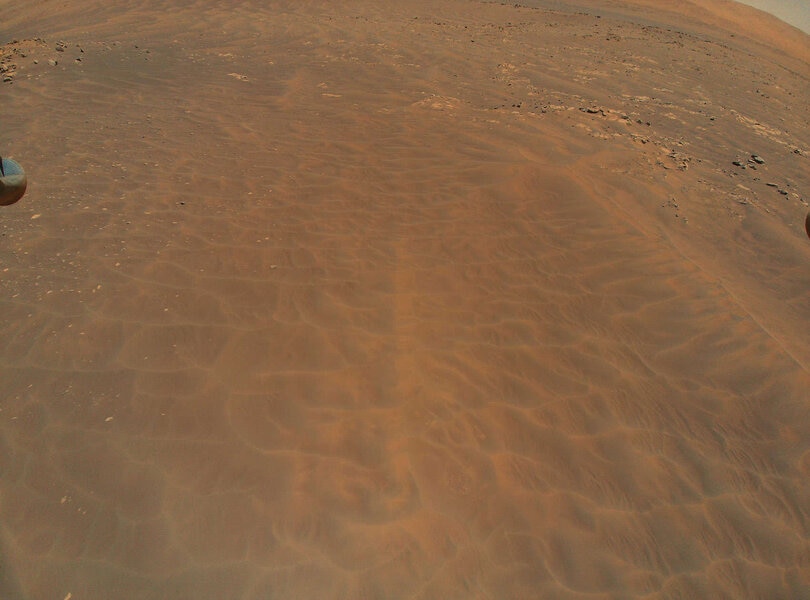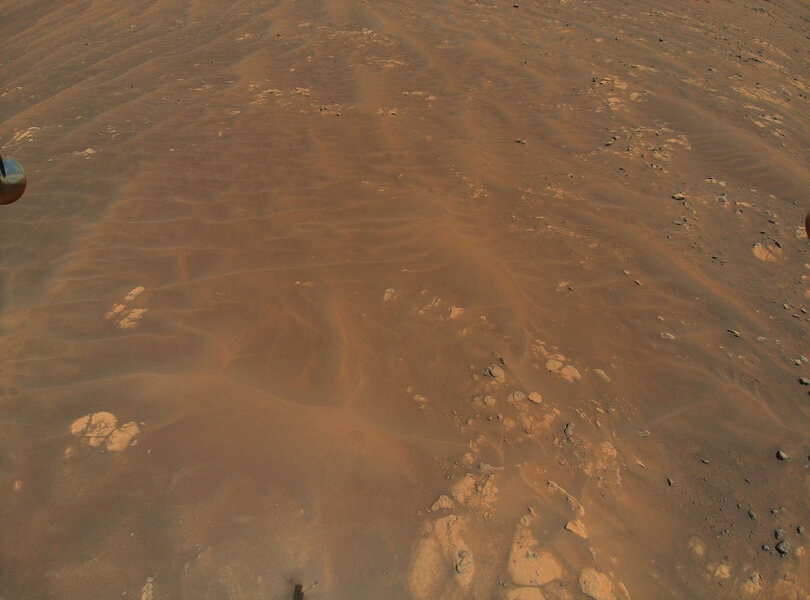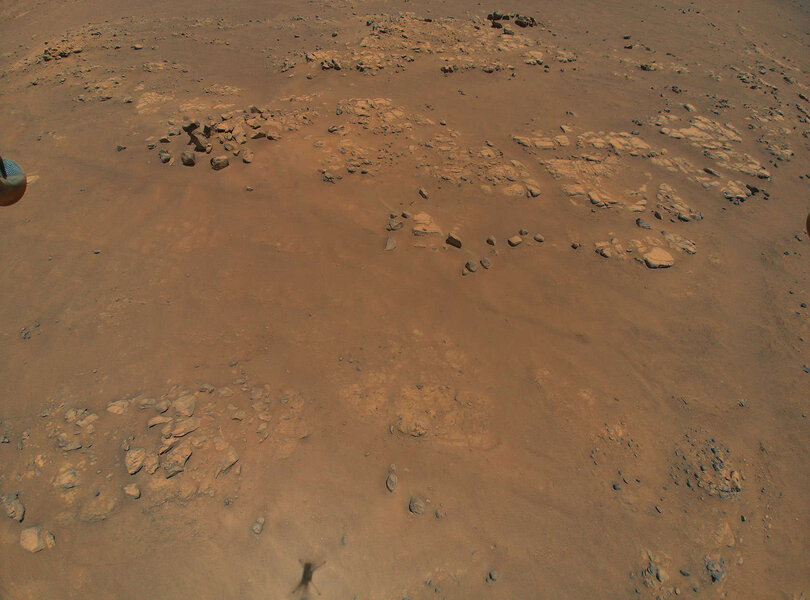Create a free profile to get unlimited access to exclusive videos, sweepstakes, and more!
Mars 'copter Ingenuity still flying high, spots hazards for the Perseverance rover

Last week, engineers at the NASA/Caltech Jet Propulsion Laboratory let the Mars Ingenuity helicopter fly for the ninth time, an amazing achievement that means the semi-autonomous drone has now made four flights past its mission's nominal five. Images it took on this latest jaunt showed terrain ahead of the rover Perseverance's path, including marking some areas that would prove dangerous for the rover to tread.
The helicopter landed on Mars along with Perseverance, tucked underneath the two-ton mobile chemistry lab. It was dropped onto the dusty ground in March 2021 and took its first flight on April 19. It's designed as a technology testbed, to see how flight could be achieved on Mars, how the drone could communicate to the rover while also determining its position as it flew along the surface. After its fifth flight in May, the mission was extended to include aiding the rover in actual operations.
On July 5th the drone took off for Flight #9, scouting out the path that lies ahead for the rover as it explores Jezero crater, a 49-kilometer-wide impact feature on Mars. The crater is known to have been a standing lake billions of years ago when Mars was warmer, had a thicker atmosphere, and was wetter. The rover/drone pair has been moving south on their way to look at a huge delta formation in the crater's northwest, where water flowed in from a river.
From ten meters above the surface, Ingenuity spotted a dune field (nicknamed Séítah), likely sand rippling about a meter high or so (in all the images shown here you can see one of the ‘copter's landing gear in the upper left). While the topography isn't a problem for the rover, Perseverance could get bogged down in the sand going down a dune face, getting trapped. Seeing as how that could end the mission, operators on Earth are very wary of such areas.
While there dunes were known to be there from orbital imagery, it's also nice to have the helicopter spotting them before the rover gets near them. At the very least, it saves time. Scientifically, too, it provides a view from a low height of an interesting wind-sculpted feature that the rover can only see from the side.
It also spotted a region where the dunes meet a patch of bedrock, which would have been the bottom of the lake eons ago.
The main reason the duo are in Jezero Crater is that if life ever flourished on Mars, a standing lake with water flowing into and out of it is an excellent place to look for it. We don't know if Mars was ever inhabited, but if it was it likely would've been from wee microscopic beasties. On Earth, ancient life left behind fossilized microbial mats (flat layers of bacterial colonies) and stromatolites (chunks of rock formed from sand cemented together by bacteria). Perseverance is looking for just that sort of macroscopic feature, but is also collecting promising samples of the surface that will be sent to Earth in later missions.
That's why this formation is interesting:
That's a fracture system, broken rocks where water flowed through them. Life needs energy and food to survive, and minerals from rocks picked up by water could supply that nourishment. Perseverance may take drill samples there to look for anything that might've been tasty to the potential Martian microbes.
We still don't know for sure what happened to Mars. It used to be much more clement, but some catastrophe in its history changed all that. A leading idea is that its magnetic field shut down, and it lost protection from the solar wind. This fierce gale of subatomic particles from the Sun could've stripped away the Martian atmosphere, lowering pressure so much that the water boiled away and the surface froze.
Looking around at the broiling Pacific northwest, the wildfire season already roaringly underway, hurricanes forming early, temperature extremes being broken all over the world, and once-a-century rains and flooding happening every few years, I have to think that understanding global changes in planetary climates may be of more than just academic interest. We're living them. The more we know about them, the better. If studying Mars gives us any insight into what's happening here, than I am all for it.





























